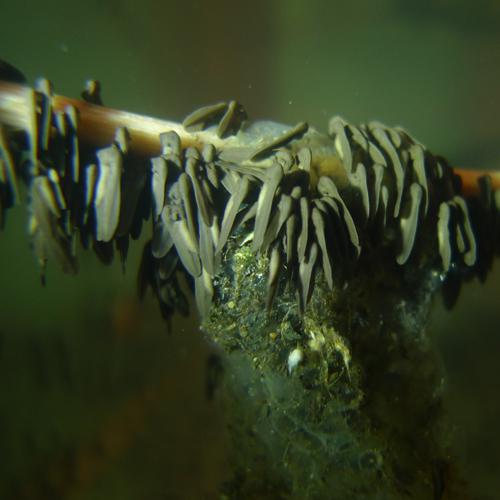Ana Ćurić
Other projects
22 Jul 2014
The Paradox of Metamorphosis in European Common Spadefoot Toad (Pelobates fuscus) in Bosnia and Herzegovina
24 Jul 2017
Conservation of Complex Aquatic and Terrestrial Habitats Preferred by Extreme Ontogenetic Shapeshifter, European Common Spadefoot Toad (Pelobates fuscus)
Main idea of this project is based on habitat conservation in order to protect key species and all other flora and fauna species that are characteristic for this lowland wetland habitat. Two main aims of the project are to restore one vernal pond and create a new one in sheltered woody area, and to legally protect the Čardak locality as first of its kind regarding key species and vernal wetland habitat.

Pelobates fuscus tadpoles research. ©Ana Curic.
Main idea of this project is based on habitat conservation in order to protect key species and all other flora and fauna species that are characteristic for this lowland wetland habitat.
This project consists of two main goals. The first one is to restore one vernal pond in Čardak locality and to dig a new one in sheltered woody area which will be adequate for salamander, newt and brown frog species whose terrestrial life phases occurs in local woods. Other is to legally protect the Čardak locality as first of its kind regarding key species and vernal wetland habitat which will involve local government, state government (Republic institute for the protection of cultural, historical and natural heritage, Ministry of spatial planning, construction and ecology) and locals as their main users and conservationists.
Restoration of one pond and protection of the site will: 1. contribute re-establishment and protection of herpetofuna species population (especially amphibians which are globally in decline) in this area with key species Pelobates fuscus as well as other flora and fauna species at the site, 2. be used for further research of P.fuscus and its tadpoles by our team and new generations of biologists and ecologists, 3. be used for other biodiversity researches, 3. be used for promotion of local community and be an example of managing the area, education and promotion with the aim of a good example of simple taking care of biodiversity while keeping the settlement safe from flooding’s.
Other important project goals are:
1. Additional flora and fauna research with the aim of collecting data for writing the scientific study for the site proclamation.
2. Installing the educational boards and building a small resting area.
3. Managing wastewater from houses with ends up in each vernal pond on the site.
4. Embracing natural fertilizers (pond muck).
5. Education of local community to use the area in a good manner and be a part of its idea.
6. First lowland national laboratory in situ that will be used for continuation of our research on lowland amphibian species, with focus on Pelobates fuscus, protecting the local biodiversity, science development and student education.
7. Rural tourism, photo safari, landscape area of interest.
We aim to round out all the previous researches and results at the Čardak site and legally protect the area in order to conserve the rare lowland wetland habitats and its specific species.